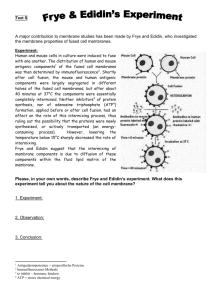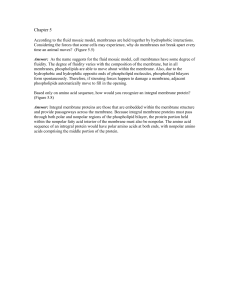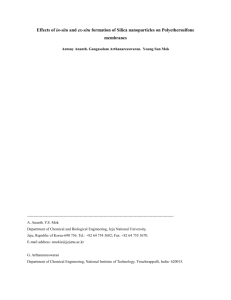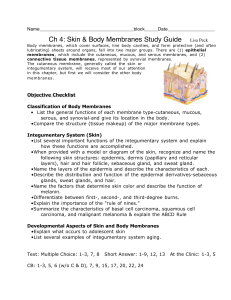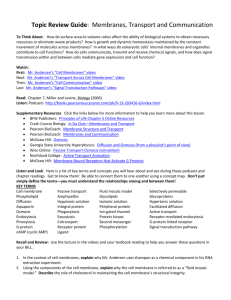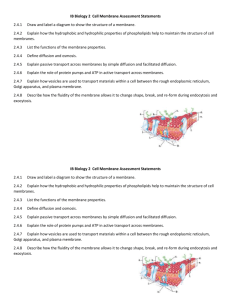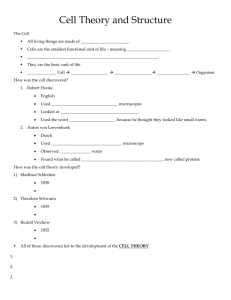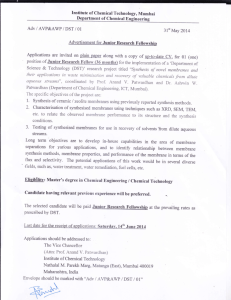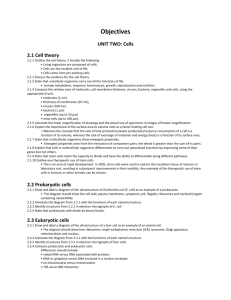Fluid Mosaic Model: Cell Membrane Structure - Citation Classic
advertisement
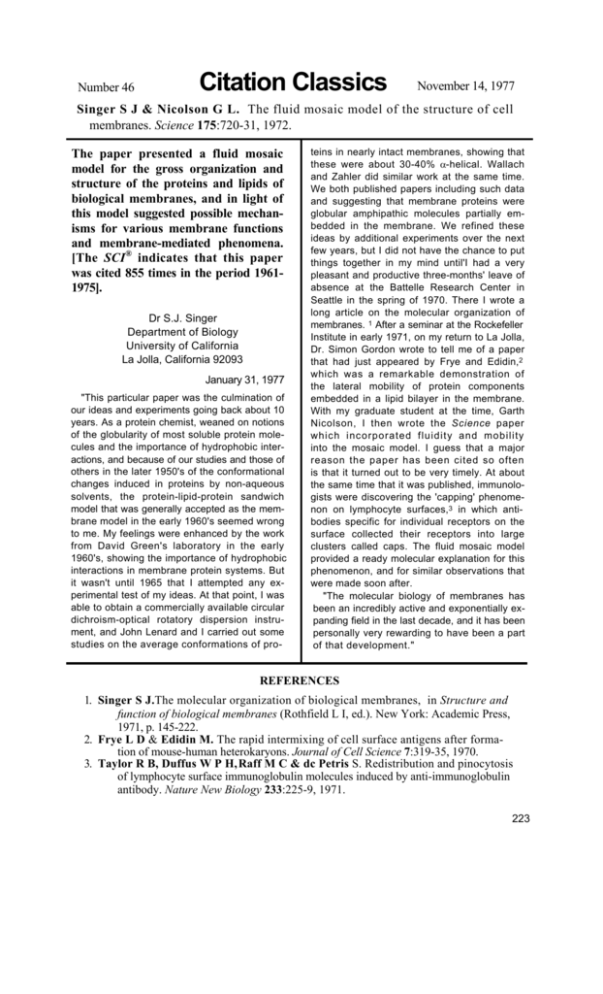
Number 46 Citation Classics November 14, 1977 Singer S J & Nicolson G L. The fluid mosaic model of the structure of cell membranes. Science 175:720-31, 1972. The paper presented a fluid mosaic model for the gross organization and structure of the proteins and lipids of biological membranes, and in light of this model suggested possible mechanisms for various membrane functions and membrane-mediated phenomena. [The SCI® indicates that this paper was cited 855 times in the period 19611975]. Dr S.J. Singer Department of Biology University of California La Jolla, California 92093 January 31, 1977 "This particular paper was the culmination of our ideas and experiments going back about 10 years. As a protein chemist, weaned on notions of the globularity of most soluble protein molecules and the importance of hydrophobic interactions, and because of our studies and those of others in the later 1950's of the conformational changes induced in proteins by non-aqueous solvents, the protein-lipid-protein sandwich model that was generally accepted as the membrane model in the early 1960's seemed wrong to me. My feelings were enhanced by the work from David Green's laboratory in the early 1960's, showing the importance of hydrophobic interactions in membrane protein systems. But it wasn't until 1965 that I attempted any experimental test of my ideas. At that point, I was able to obtain a commercially available circular dichroism-optical rotatory dispersion instrument, and John Lenard and I carried out some studies on the average conformations of pro- teins in nearly intact membranes, showing that these were about 30-40% α-helical. Wallach and Zahler did similar work at the same time. We both published papers including such data and suggesting that membrane proteins were globular amphipathic molecules partially embedded in the membrane. We refined these ideas by additional experiments over the next few years, but I did not have the chance to put things together in my mind until'I had a very pleasant and productive three-months' leave of absence at the Battelle Research Center in Seattle in the spring of 1970. There I wrote a long article on the molecular organization of membranes. 1 After a seminar at the Rockefeller Institute in early 1971, on my return to La Jolla, Dr. Simon Gordon wrote to tell me of a paper that had just appeared by Frye and Edidin,2 which was a remarkable demonstration of the lateral mobility of protein components embedded in a lipid bilayer in the membrane. With my graduate student at the time, Garth Nicolson, I then wrote the Science paper which incorporated fluidity and mobility into the mosaic model. I guess that a major reason the paper has been cited so often is that it turned out to be very timely. At about the same time that it was published, immunologists were discovering the 'capping' phenomenon on lymphocyte surfaces,3 in which antibodies specific for individual receptors on the surface collected their receptors into large clusters called caps. The fluid mosaic model provided a ready molecular explanation for this phenomenon, and for similar observations that were made soon after. "The molecular biology of membranes has been an incredibly active and exponentially expanding field in the last decade, and it has been personally very rewarding to have been a part of that development." REFERENCES 1. Singer S J.The molecular organization of biological membranes, in Structure and function of biological membranes (Rothfield L I, ed.). New York: Academic Press, 1971, p. 145-222. 2. Frye L D & Edidin M. The rapid intermixing of cell surface antigens after formation of mouse-human heterokaryons. Journal of Cell Science 7:319-35, 1970. 3. Taylor R B, Duffus W P H, Raff M C & dc Petris S. Redistribution and pinocytosis of lymphocyte surface immunoglobulin molecules induced by anti-immunoglobulin antibody. Nature New Biology 233:225-9, 1971. 223
